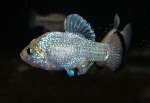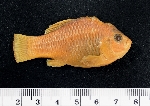
Mexican killifishes at the edge of extinction
Freshwater and Marine Aquarium (FAMA), 178-179, 184-185, 190 may.-1995
" Northern Mexico, and the neighboring parts of the United States, is mainly a desert region. Paradoxical as it might seem, this region houses a very interesting fish fauna. In this arid area, water is often restricted to small and isolated groundwater-supplied springs. The fish in these springs have often become highly specialized due to the isolation, and this has resulted in the high number of endemic species known from the region. According to Minckley and Deacon (1991), about a third of the native fish fauna of North America is found in the arid western part of the continent.
The future of this unique fauna does not seem too bright. As a result of human activity. this highly fragile ecosystem is severely endangered. In the United States, action has been taken to protect some of the endangered species in their habitats (i.e., the Devils Hole Pupfish, Cyprinodon diabolis). In Mexico. however, very little has been done to preserve the unique. native fish fauna. Thanks to the work of groups like the Desert Fishes Council, the concern for the native fauna of Mexico is growing. Hopefully, this will lead to the protection of some species and habitat: however, a very high number of species will probably be extirpated before such action is attained.
In this article, I will describe the situation of some species of killifish that are endemic to small springs in the Mexican state of Nuevo Leon "
Clasificación: Ecología y conservación.
Idioma: English
Referencia en bibliografía de especies (6)
Tveteraas, Andreas. 1995. "Mexican killifishes at the edge of extinction". Freshwater and Marine Aquarium (FAMA). 178-179, 184-185, 190 (ffm01224) (resumen)





